Papers by Rameshsharma Ramloll
Computers and Their Applications, 2006
The primary objective of the Idaho Bioterrorism Awareness and Preparedness Program (IBAPP) is to ... more The primary objective of the Idaho Bioterrorism Awareness and Preparedness Program (IBAPP) is to administer and deliver continuing-education classes relevant to bioterrorism preparedness to healthcare professionals in rural Idaho. This program will address the gaps and ...
Journal of Emergency Management, May 1, 2010
Practicing drills and exercises to improve individual and team performance in real physical hospi... more Practicing drills and exercises to improve individual and team performance in real physical hospital settings often requires lockdown of the healthcare center, and effects on real patients are unpredictable. A virtual triage exercise was developed around a pandemic influenza scenario and was carried out in a 3D interactive virtual environment. Without putting real patients or participants at risk, the environment allowed geographically dispersed first responders and hospital staff to practice their roles in a common setting. The results showed that the exercise produced perceived improvements in preparedness competencies and team interactions.

BCS Learning & Development, 1998
In this paper, we present the design rationale for a group drawing tool exploiting localised audi... more In this paper, we present the design rationale for a group drawing tool exploiting localised auditory cues to describe user activities. Our hypothesis is that these cues are important for two reasons. Firstly, they make participants aware of the details of execution of peer activities. This is especially significant when these activities are out of visual focus. Secondly, they convey intentionality information among participants. The later has been found to influence significantly inter-participant conversations during real world collaborative drawing activities. Our approach for adding sounds to the group drawing environment involves associating localised auditory messages to the palette, tools, primitive drawing objects and cursors representing metaphoric hands or points of gaze. These mappings give rise to dynamic soundscapes describing operations being or intended to be performed. We discuss the auditory authoring and browsing techniques involved in our group drawing environment together with their implications for the design of future collaborative environments involving auditory ecologies.
Proceedings. Eighth International Conference on Information Visualisation, 2004. IV 2004., Jul 14, 2004
... Rameshsharma Ramloll National Rehabilitation Hospital, Washington DC 20010, {rameshsharma.ram... more ... Rameshsharma Ramloll National Rehabilitation Hospital, Washington DC 20010, {rameshsharma.ramloll@medstar.net} Cheryl Trepagnier, Marc Sebrechts Department of Psychology, Catholic University of America, {trepagnier@cua.edu} ...
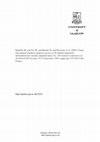
Springer eBooks, 2001
We investigated two solutions for numerical (2D) tabular data discovery and overview for visually... more We investigated two solutions for numerical (2D) tabular data discovery and overview for visually impaired and blind users. One involved accessing information in tables (26 rows x 10 columns containing integers between and including 0 and 100) by this target user group using both speech and non-speech sounds. The other involved accessing similar information in tables of the same size through speech only by the same user group. We found that opportunities to access data through non-speech sounds result in a highly significant decrease in the overall subjective workload, more specifically in the mental, temporal, performance and frustration workload categories. This subjective workload assessment was supported by our quantitative results which showed a highly significant decrease in the average time taken to complete a given data comprehension task and a significant increase in the number of successfully completed tasks.

ACM Sigsoft Software Engineering Notes, Mar 1, 1999
Collaborative systems need to provide some means for users to be aware of peer activities. Common... more Collaborative systems need to provide some means for users to be aware of peer activities. Common approaches involve broadcasting events generated as a result of a particular user's actions at the interface to others. Rather than flooding users with information about all activities occurring in the shared environment, filtration techniques allow each user to be exposed to relevant awareness information. Such techniques are often based on user configurable agents. Unfortunately, these so far do not support satisfactorily the improvisational nature of collaborative activities. This is because user configuration is effective mainly in cases where interactions can be anticipated and where configuration plans can be drawn. It is also difficult for a configurable agent to capture the diversity and the complex interrelationships between collaborative activities. In highly dynamic collaborative environments, the need to synchronise configurations with rapidly evolving needs imposes a heavy task load on participants. In Moksha, our prototypical multiuser desktop, this problem is addressed by extending the desktop metaphor and automating the filtration control process so that it becomes ubiquitous to the user. The cross-client linkage of the desktop interface elements, the use of multi-media and its browsing techniques are the main components underlying our strategy.
Blind or visually impaired users typically access diagrams in the tactile medium. This paper desc... more Blind or visually impaired users typically access diagrams in the tactile medium. This paper describes TouchMelody, a system designed for augmenting such existing diagrams with 3D spatial auditory information to increase their usefulness , information content and reduce tactile clutter. The motivation for this system, an overview of its development and early experiences are presented. The two major technologies used are the Polhemus FASTRAK and the LakeDSP CP4 to facilitate the creation of a directly ma-nipulatable dynamic 3D spatial soundscape.
ABSTRACT This paper argues for an agent based approach to tackle difficulties users usually exper... more ABSTRACT This paper argues for an agent based approach to tackle difficulties users usually experience when navigating in large scale 3D computer virtual environments (CVEs). This view is examined from two different perspectives namely that of solitary and collaborative wayfinding.

Proceedings Sixth International Conference on Information Visualisation, Jun 25, 2003
We describe AudioCave, an environment for exploring the impact of spatialising sonified graphs on... more We describe AudioCave, an environment for exploring the impact of spatialising sonified graphs on a set of numerical data comprehension tasks. Its design builds on findings regarding the effectiveness of sonified graphs for numerical data overview and discovery by visually impaired and blind students. We demonstrate its use as a test bed for comparing the approach of accessing a single sonified numerical datum at a time to one where multiple sonified numerical data can be accessed concurrently. Results from this experiment show that concurrent access facilitates the tackling of our set multivariate data comprehension tasks. AudioCave also demonstrates how the spatialisation of the sonified graphs provides opportunities for sharing the representation. We present two experiments investigating users solving set data comprehension tasks collaboratively by sharing the data representation.
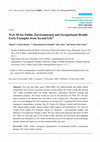
International Journal of Environmental Research and Public Health, Dec 18, 2008
Over the past three years (2006-2008), the medical/health and public health communities have show... more Over the past three years (2006-2008), the medical/health and public health communities have shown a growing interest in using online 3D virtual worlds like Second Life ® (http://secondlife.com/) for health education, community outreach, training and simulations purposes. 3D virtual worlds are seen as the precursors of 'Web 3D', the next major iteration of the Internet that will follow in the coming years. This paper provides a tour of several flagship Web 3D experiences in Second Life ® , including Play2Train Islands (emergency preparedness training), the US Centers for Disease Control and Prevention-CDC Island (public health), Karuna Island (AIDS support and information), Tox Town at Virtual NLM Island (US National Library of Medicine-environmental health), and Jefferson's Occupational Therapy Center. We also discuss the potential and future of Web 3D. These are still early days of 3D virtual worlds, and there are still many more untapped potentials and affordances of 3D virtual worlds that are yet to be explored, as the technology matures further and improves over the coming months and years.

Prehospital and Disaster Medicine, Feb 7, 2013
IntroductionDuring a pandemic influenza, emergency departments will be overwhelmed with a large i... more IntroductionDuring a pandemic influenza, emergency departments will be overwhelmed with a large influx of patients seeking care. Although all hospitals should have a written plan for dealing with this surge of health care utilization, most hospitals struggle with ways to educate the staff and practice for potentially catastrophic events.Hypothesis/ProblemTo better prepare hospital staff for a patient surge, a novel educational curriculum was developed utilizing an emergency department for a patient surge functional drill.MethodsA multidisciplinary team of medical educators, evaluators, emergency preparedness experts, and technology specialists developed a curriculum to: (1) train novice users to function in their job class in a multi-user virtual environment (MUVE); (2) obtain appropriate pre-drill disaster preparedness training; (3) perform functional team exercises in a MUVE; and (4) reflect on their performance after the drill.ResultsA total of 14 students participated in one of two iterations of the pilot training program; seven nurses completed the emergency department triage course, and seven hospital administrators completed the Command Post (CP) course. All participants reported positive experiences in written course evaluations and structured verbal debriefings, and self-reported increase in disaster preparedness knowledge. Students also reported improved team communication, planning, team decision making, and the ability to visualize and reflect on their performance.ConclusionData from this pilot program suggest that the immersive, virtual teaching method is well suited to team-based, reflective practice and learning of disaster management skills.GreciLS, RamlollR, HurstS, GarmanK, BeedasyJ, PieperEB, HuangR, HigginbothamE, AghaZ. vTrain: a novel curriculum for patient surge training in a multi-user virtual environment (MUVE). Prehosp Disaster Med.2013;28(3):1-8.
Version 1.0 The main driving motivation behind the COMIC spatial model was to inform the design o... more Version 1.0 The main driving motivation behind the COMIC spatial model was to inform the design of systems that allow multi-user interactions without forcing on participants the need to learn new rules which differ from those normally used in analogous situations in 'real ' space. This paper attempts to identify the strengths and weaknesses of this model by examining its internal consistency, the questions it raises, the suitability of the artefacts its proponents propose within its framework, and its scaleability, that is, whether it will be able to mature into a model of interaction for complex computer virtual environments without undergoing some radical changes. Keywords interaction mechanisms, virtual teleconferencing systems, awareness, computer virtual environments. 1.
Abstract: Over the past three years (2006-2008), the medical/health and public health communities... more Abstract: Over the past three years (2006-2008), the medical/health and public health communities have shown a growing interest in using online 3D virtual worlds like Second Life ®
In this technical note, we illustrate a possible application of gaze tracking in the auditory dom... more In this technical note, we illustrate a possible application of gaze tracking in the auditory domain. We show how coupling the position of gaze with that of a sound sensor provides a number of new interaction opportunities at information rich interfaces involving auditory landscapes. We describe our strategy for exploring this browsing technique and introduce the application area where it will be exploited.
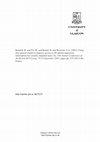
People and Computers XV—Interaction without Frontiers, 2001
We investigated two solutions for numerical (2D) tabular data discovery and overview for visually... more We investigated two solutions for numerical (2D) tabular data discovery and overview for visually impaired and blind users. One involved accessing information in tables (26 rows x 10 columns containing integers between and including 0 and 100) by this target user group using both speech and non-speech sounds. The other involved accessing similar information in tables of the same size through speech only by the same user group. We found that opportunities to access data through non-speech sounds result in a highly significant decrease in the overall subjective workload, more specifically in the mental, temporal, performance and frustration workload categories. This subjective workload assessment was supported by our quantitative results which showed a highly significant decrease in the average time taken to complete a given data comprehension task and a significant increase in the number of successfully completed tasks.
CHI '02 extended abstracts on Human factors in computing systems - CHI '02, 2002
Blind or visually impaired users typically access diagrams in the tactile medium. This paper desc... more Blind or visually impaired users typically access diagrams in the tactile medium. This paper describes TouchMelody, a system designed for augmenting such existing diagrams with 3D spatial auditory information to increase their usefulness , information content and reduce tactile clutter. The motivation for this system, an overview of its development and early experiences are presented. The two major technologies used are the Polhemus FASTRAK and the LakeDSP CP4 to facilitate the creation of a directly ma-nipulatable dynamic 3D spatial soundscape.

Proceedings Sixth International Conference on Information Visualisation
We describe AudioCave, an environment for exploring the impact of spatialising sonified graphs on... more We describe AudioCave, an environment for exploring the impact of spatialising sonified graphs on a set of numerical data comprehension tasks. Its design builds on findings regarding the effectiveness of sonified graphs for numerical data overview and discovery by visually impaired and blind students. We demonstrate its use as a test bed for comparing the approach of accessing a single sonified numerical datum at a time to one where multiple sonified numerical data can be accessed concurrently. Results from this experiment show that concurrent access facilitates the tackling of our set multivariate data comprehension tasks. AudioCave also demonstrates how the spatialisation of the sonified graphs provides opportunities for sharing the representation. We present two experiments investigating users solving set data comprehension tasks collaboratively by sharing the data representation.
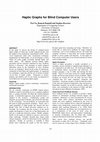
Haptic Human-Computer Interaction, 2001
In this paper we discuss the design of computer-based haptic graphs for blind and visually impair... more In this paper we discuss the design of computer-based haptic graphs for blind and visually impaired people with the support of our preliminary experimental results. Since visual impairment makes data visualisation techniques inappropriate for blind people, we are developing a system which can make graphs accessible through haptic and audio media. The disparity between human haptic perception and the sensation simulated by force feedback devices is discussed. Our strategies to tackle technical difficulties posed by the limitations of force feedback devices are explained. Based on the results of experiments conducted on both blind and sighted people, we suggested two techniques: engraving and the use of texture to model curved lines on haptic graphs. Integration of surface property and auditory cues in our system are proposed to assist blind users in exploring haptic graphs.





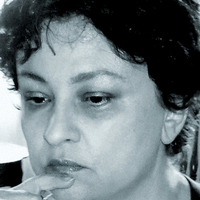


Uploads
Papers by Rameshsharma Ramloll
Key Features:
Targeted Visual Support: Includes key figures from the original book, aligned with the audio content for a cohesive experience.
Clear and Practical Design: Features patent diagram-style illustrations that effectively communicate complex concepts from the virtual world, independent of specific graphics technology.
Well-Organized Layout: Images are placed in the same sequence as in the book, ensuring easy reference and continuity.
Deepens Comprehension: More than mere illustrations, each image is a tool to enhance understanding of the book’s themes and ideas.
The "Visual Companion to Metaverse or Mindtrap" is designed to be a modest yet invaluable aid, enhancing your journey through "Metaverse or Mindtrap" on Audible with insightful and visually engaging content.